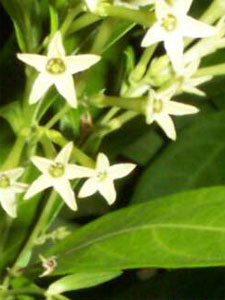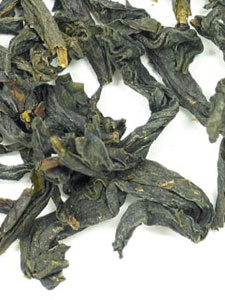The Basics of Brewing Oolong



There's one question I get asked on more-or-less a daily basis, and it is this: What is the deal with Wu Long slimming tea? The term "wu long" is almost always used, and the word "slimming" appears just about every time as well.
It's actually a good question, and I don't get tired of answering it. My punk-rock roots are showing: every time I answer this question I get to save someone from being scammed by an evil corporation.
But let's back up. Let's discuss what exactly this tea is, how it's made, and how it tastes, and then we'll talk about diets.
First of all, "wu long," while accurate, is not the preferred term. Coming from the Chinese "wu"—"black"—and "lung"—dragon—the tea is more commonly termed "oolong" in the West—in fact, is considered the standard.
The production of oolong requires that the leaves be processed directly after picking. First the leaves are wilted in the sun for a short period of time. They are placed into baskets and shaken, which bruises the leaves. The juices in the leaves are now exposed to the air, which begins the process of oxidation. The leaves are then spread out to dry. After a period of time—less than 2 hours for Chinese oolongs, longer for Taiwanese oolongs, the tea is fired, which stops the fermentation process.
Oolongs are traditionally fired into hot woks and cooked very quickly. After that is done, the leaves may be further fermented, and then fired again. Ultimately we have crisp, dry leaves.
Oolong tea is often scented with jasmine flowers. Jasmine flowers are picked, and the tea leaves are steamed in order to hold scent well. (Often, green tea leaves are used for this process, but the process of scenting partially oxidizes the leaves, causing them to be considered oolong.) Jasmine flowers bloom at night; they are picked early in the day and mixed in with the tea at night, when they open and release their scent. The scent is infused into the leaves, and the process is repeated over a couple of nights. So. Now that we've gotten that cleared up, let's take a look at the infamous Wu Long Tea Diet. The pitch, if you're going on any of several sketchy sites online, is that here is a rare tea imported directly from a special mountain in China that will make you lose so many pounds in so many days. It'll burn fat and trim your waistline. Only this tea will do, so act now!
On a sidenote, my personal theory for why the term "wu long" is used instead of the more standardized "oolong" is to increase the exotic aura and prolong the sense of rareness. Adagio and most other companies have an "oolong" section, but they don't have one labeled "wu long." The tea isn't rare. I can tell you that for a fact, and I can prove it to you by taking a walk a few hundred feet away and picking up as much of it as I can carry.
I made this point clear very often, but this is one that can never be repeated too often: all tea is made from the same plant, Camellia sinensis. Whether you get green, white, oolong, or black tea depends on how you process it. There will be different amounts of antioxidants and other chemicals in different varieties—but for the most part, the difference is negligible. If you're drinking tea for health benefits, you don't need to drink a specific kind—just pick a kind that you like. On that score alone, the "wu long tea helps you lose weight" is inaccurate—you'd be able to get the same benefits from drinking any tea.
But what exactly are these benefits, as far as weight is concerned? Like any fad diet, the results look much better on paper than they do in real life. I'll say this quite frankly: you are not going to lose a significant amount of weight from drinking tea. Tea does speed up the metabolism. The number that I usually see is around 4%. That translates to roughly 8 pounds a year. Which is, of course, nice—but it's nowhere near the miraculous results that are usually bandied about. Drinking tea will be a nice (and delicious!) supplement to a healthy and sane diet and exercise plan, and it certainly can help you avoid those periods where you stay at a certain weight, but on its own it won't do that much. Anyone who tells you differently is selling you an inferior product at about twice what you ought to be paying for it.
There are, while I'm on the subject, several herbal teas that you can buy which claim to be weight loss teas. Stay away from those—while oolong or wu long or whatever you like to call it will never be harmful, your average weight loss tea can be. Those usually work by being strong diuretics and laxatives, so you'll drop a lot of water weight quickly, but not only will you have to deal with problems related to dehydration, many of them can mess up your digestive system irrevocably. Cutting out fats and sweets and switching to non-soda drinks (which tea can help you do!), plus getting out for a walk every so often is a much healthier—and effective—method.
So now that we're drinking oolong, what should you try first? By far our most popular is the Jasmine #12, which is one of the scented teas. It's also known as Dragon Pearls, and it comes rolled into tiny balls of sweet-smelling leaves. When you add water to them, the pearls unroll into leaves.
Wuyi Ensemble is a darker, non-scented oolong that I'll admit to hating at first. It grew on me and it's one of my favorites now. It's got a very strong but not bitter taste to it. The most recent TeaChef contest used Wuyi as the secret ingredient, so if you're a cook, you'll find some handy recipes to go with the tea.
Ti Kuan Yin is a grassy-tasting oolong which is named after the Chinese Goddess of Mercy. A story, which I rather like, tells of a poor farmer who tended a run-down temple dedicated to her. After many months of cleaning and sweeping and lighting incense, the goddess appeared to him and, in gratitude for his service, gave him a gift: a tea plant. The farmer cultivated the plant and such is this tea's origin.
But my personal favorite oolong is Oolong #40, which is a very dark and rich oolong. Oolong #40 is a Taiwanese Oolong. In the tea world, these are known as "Formosa" teas, coming from the Portuguese word for "beautiful." Portuguese explorers and sailors, upon discovering the island, apparently liked what they saw, and their adjective stuck.
Oolong does not have a blanket method of preparation as black teas do, as there are darker and lighter oolongs. For lighter teas, like the Jasmine #12, you'll want to use a teaspoon of tea steeped in 180 degree water for about five minutes. Darker oolongs, like the Wuyi, get steeped in boiling (212 degree) water, for closer to seven. Remember that all of Adagio's tins feature temperature and time guidelines on their fronts, so you'll be able to tell easily! While all teas can hold multiple infusions, oolong teas are particularly good for this—many people say that oolongs don't mature into their full flavor until the second or even third infusion, so experiment!
Green tea is also touted as a healthy kind of tea, but as we're keeping the "all tea comes from the same plant" mantra in the back of our minds, we know that it's got the same benefits as all other types of tea, so the information on dieting that I've just given you is equally valid. But still, green tea is an important and popular facet of the tea world, and it deserves its own look. Next month, I'll be examining just what makes green tea so special.
For further information on tea's health benefits, please visit Adagio's page on that at http://www.adagio.com/info/health_benefits.html. For our page on oolong teas, visit http://www.adagio.com/oolong/oolong_sampler.html.
